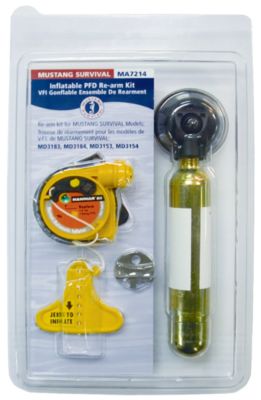Inspecting Your Inflatable PFD
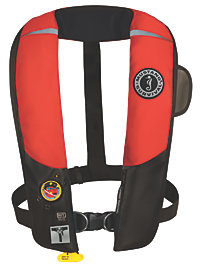 Inflatable life jackets have become popular with boaters because they are more comfortable than traditional life jackets – and we all know we are much more likely to wear it if it feels good. But like most safety items, it's important to inspect your inflatable life vest at least once a year to make sure it's functioning properly. We recommend doing so at the beginning of the boating season or before any major outing. Following are the steps recommended by the experts on how to inspect your inflatable PFD.
Inflatable life jackets have become popular with boaters because they are more comfortable than traditional life jackets – and we all know we are much more likely to wear it if it feels good. But like most safety items, it's important to inspect your inflatable life vest at least once a year to make sure it's functioning properly. We recommend doing so at the beginning of the boating season or before any major outing. Following are the steps recommended by the experts on how to inspect your inflatable PFD.
Unpack
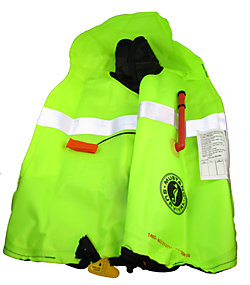
Next, carefully open up the life jacket making sure to take note of how it unpacks so that you can repack it in the same manner when you are done testing.
After opening it up, you should see several things:
- CO² canister – holds the gas to inflate your life jacket
- Arming indicator – tells you if your life jacket is armed (green) or not (red)
- Manual inflation valve – used to manually inflate your life jacket for testing or in an emergency
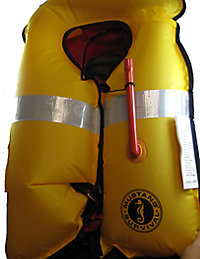
Inspect
After unpacking your PFD, you should visually inspect the inside to make sure there are no holes or tears. Unscrew the CO² cartridge and inspect the tip to make sure there is no corrosion and that it hasn't discharged (you will see a pinhole at the tip if it has).
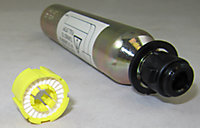

If there are no leaks, press lightly on the top of the oral inflation tube to deflate the PFD. Make sure you have all the air out, that you've reinstalled the CO² canister and that the life jacket is completely dry before repacking. Repack your PFD exactly as you unpacked it, consulting the manual if necessary. The folds should be smooth and everything packed nice and tight. Take extra care in placing the manual inflation tab in the correct location so that you don't accidentally inflate the jacket.
Ensure that the CO² canister is properly aligned and that you can easily see the arming indicator through the clear window. 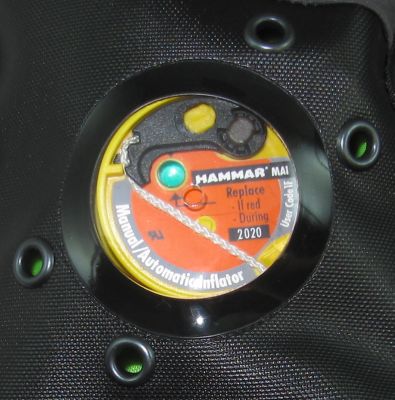
You've now officially completed the inspection of your inflatable PFD! Fisheries Supply strongly believes in helping boaters stay safe on the water, and we think this inspection may just save your life one day - so we hope you've found this Navigator useful. If you have any additional questions about this process, please don't hesitate to contact our safety experts at (800) 426-6930.
If you are interested on further articles on boating safety, you can read about Fire Extinguishers, Creating an Abandon Ship Bag or Navigation Lights.
